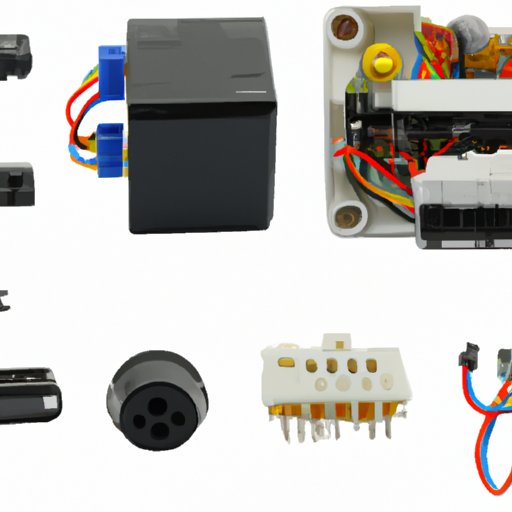Introduction
A starter solenoid is an essential component of your car’s electrical system, providing the necessary power to start the engine. When the ignition switch is turned on, electricity flows through the solenoid, activating the starter motor which in turn starts the engine. If the solenoid is faulty or not working, it can be difficult to start the car. Fortunately, there are ways to bypass the starter solenoid in order to get the car running again.
Troubleshooting a Faulty Starter Solenoid
The first step in troubleshooting a faulty starter solenoid is to diagnose the problem. Check for any loose connections, corroded wires, or other signs of damage that may indicate a problem with the solenoid. If the problem appears to be with the solenoid itself, you can test it using a multimeter to make sure it is still functioning properly. If the solenoid is indeed faulty, you will need to replace it or bypass it in order to get the car running again.

Understanding How to Bypass a Starter Solenoid
Bypassing a starter solenoid involves connecting two wires directly to the starter motor in order to provide a direct connection to the battery. This process is relatively simple, but it does come with some risks. First, if the wiring is done incorrectly, it could result in a short circuit or even a fire. Additionally, bypassing the starter solenoid means that the starter motor will not be protected from excessive current draw, potentially leading to damage to the motor.

Exploring Alternatives for Bypassing a Starter Solenoid
If you’re looking for an alternative to bypassing a starter solenoid, there are several options available. The most common solution is to install an external starter switch, which allows you to manually activate the starter motor without having to go through the solenoid. Additionally, you can use a relay to control the current flow to the starter motor, or you can purchase a remote starter kit to do the job for you.
DIY Guide to Bypassing a Starter Solenoid
If you decide to bypass the starter solenoid yourself, you will need to gather the necessary tools and materials. You will need a pair of wire strippers, a soldering iron, solder, heat shrink tubing, and some insulated wire. Once you have gathered the supplies, you can begin the process.
The first step is to disconnect the battery to ensure that no current is flowing through the system while you work. Next, you will need to remove the starter solenoid from its mounting bracket and disconnect the wires. Then, you will need to install the bypass wires, which should be connected directly to the starter motor terminals. Once the bypass wires have been installed, you can reconnect the battery and test the new connection.
Step-by-Step Instructions for Bypassing a Starter Solenoid
1. Gather the Necessary Tools and Materials: Wire Strippers, Soldering Iron, Solder, Heat Shrink Tubing, and Insulated Wire.
2. Disconnect the Battery.
3. Remove the Starter Solenoid from its Mounting Bracket and Disconnect the Wires.
4. Install the Bypass Wires Directly to the Starter Motor Terminals.
5. Reconnect the Battery.
6. Test the New Connection.

Tips and Tricks for Bypassing a Starter Solenoid
When working on your car, it is important to always wear safety equipment such as goggles, gloves, and protective clothing. Double check all connections before testing the new connection to make sure they are secure. Make sure to follow the manufacturer’s instructions when installing the bypass wires, and be aware of any potential hazards when working on your car.
Conclusion
Bypassing a starter solenoid is not a difficult task, but it is important to understand the risks associated with the process. With the right tools and materials, you can easily bypass a starter solenoid yourself. Just remember to always wear safety equipment, double check all connections, and follow the manufacturer’s instructions when installing the bypass wires.
(Note: Is this article not meeting your expectations? Do you have knowledge or insights to share? Unlock new opportunities and expand your reach by joining our authors team. Click Registration to join us and share your expertise with our readers.)
